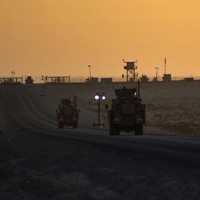In its just-released final audit report (.pdf), the Office of the Special Inspector General for Iraq Reconstruction Funds (SIGIR) last week warned that billions of U.S. dollars may have been wasted or misappropriated in the process of reconstructing Iraq. While reports of waste surfaced early in the post-invasion occupation of Iraq, problems have also plagued the transition since 2010 from a military- to a civilian-led U.S. mission in Iraq. Many of those shortcomings came to light during a recent hearing by the House Oversight and Government Reform Committee to assess the interagency effort in Iraq now that all U.S. combat troops have left the country.
After Aug. 31, 2010, the official U.S. role in Iraq changed from a military mission led by the Defense Department, to a primarily civilian mission, called “New Dawn,” led by the State Department. This transition concluded on Dec. 18, 2011, when the last units of U.S. Forces-Iraq (USF-I) left the country and State assumed exclusive leadership for the official U.S. presence.
The handoff from Defense to State represented one of the most complex military-to-civilian transitions in American history, with State taking over many Defense programs, while changing their missions and scale. The Defense Department continues to support the State Department by assigning Defense personnel to State-led posts, loaning the State Department equipment and assisting with logistical and other support contracts. State reimburses Defense for all the equipment loans, contracts and services it provides.

